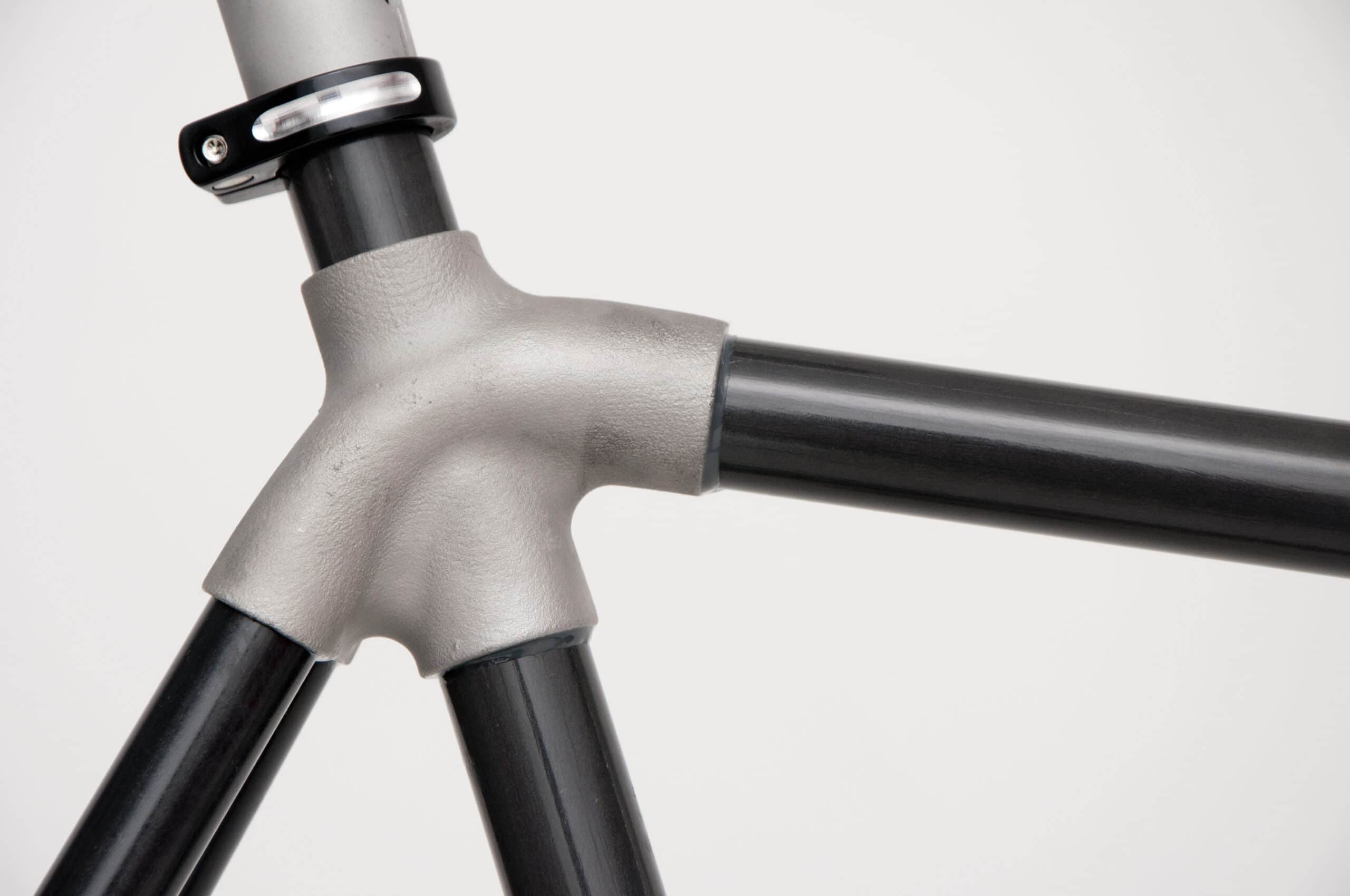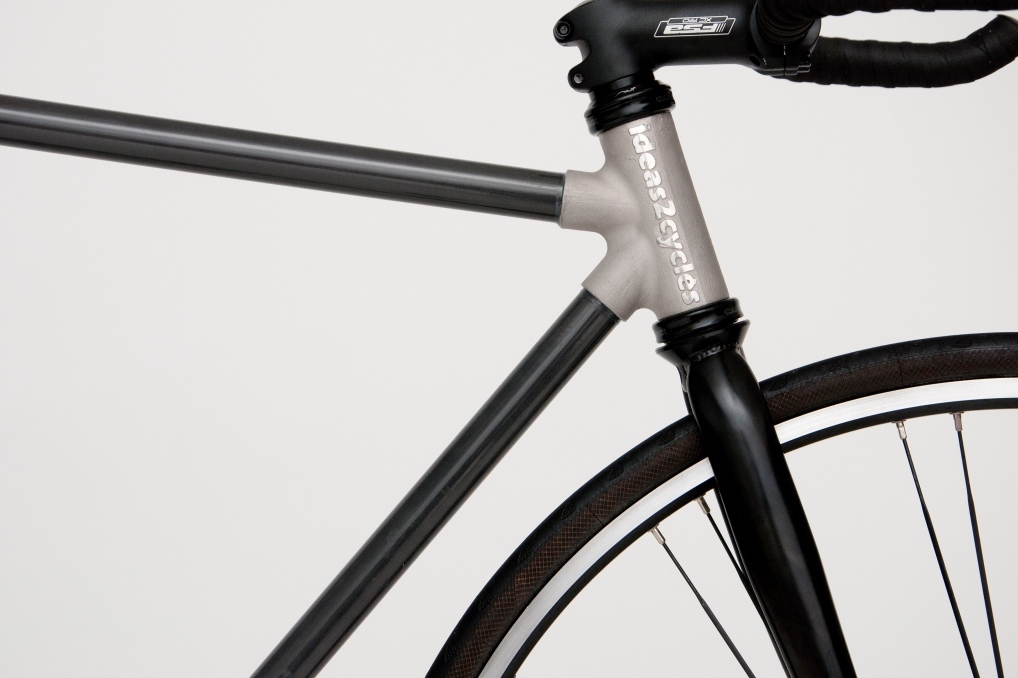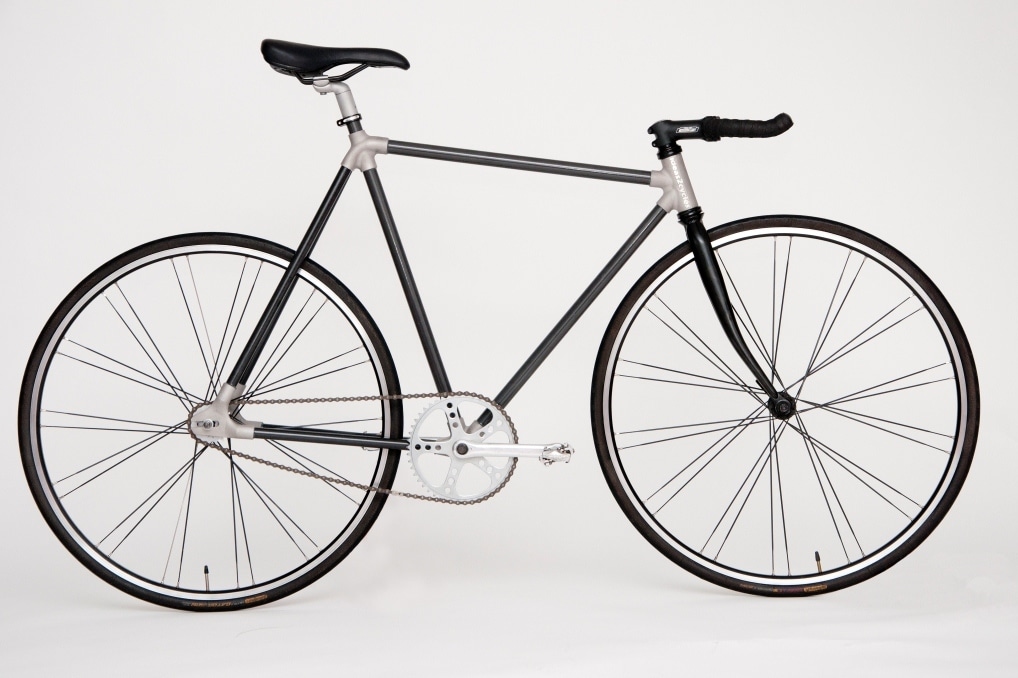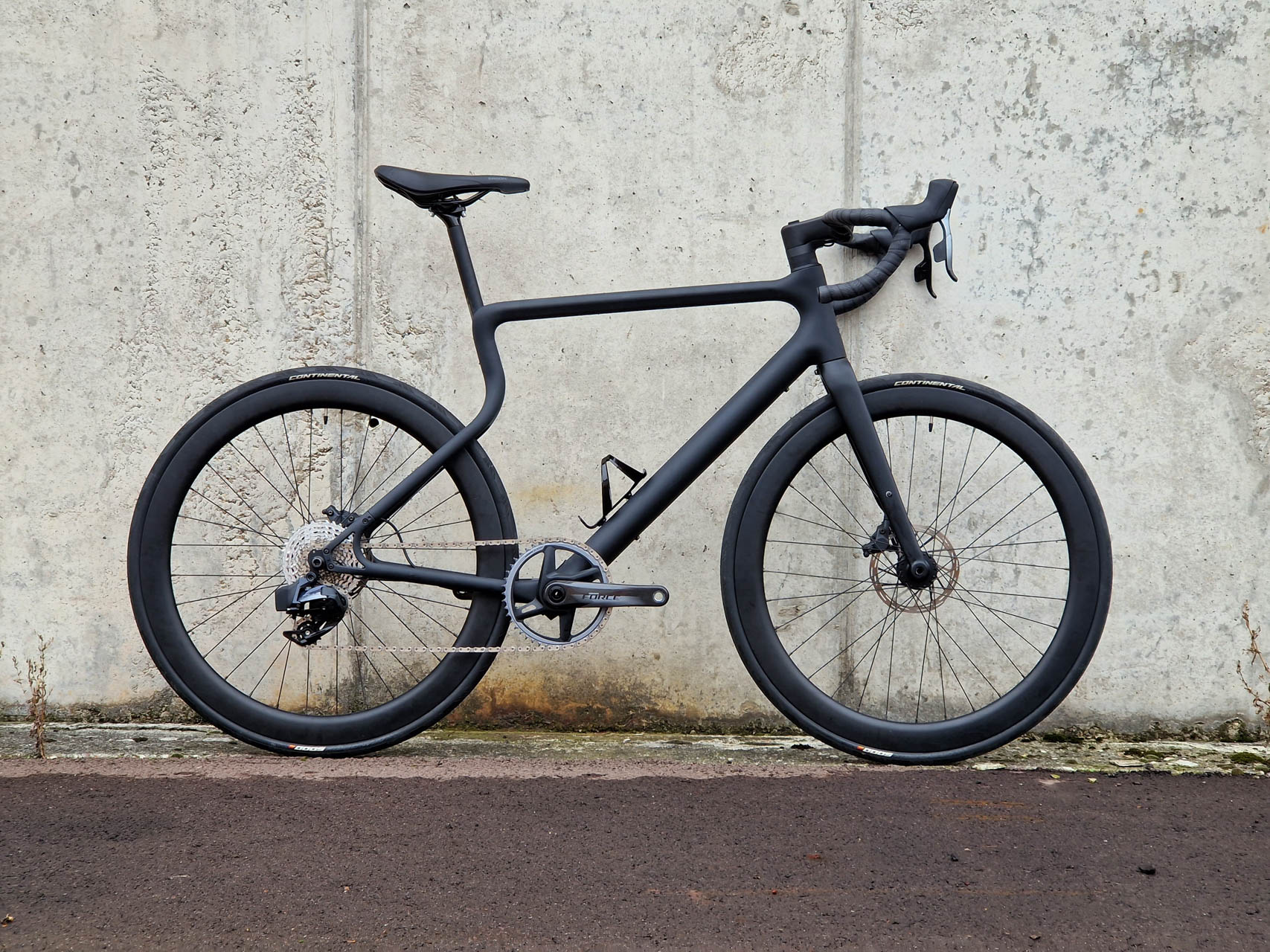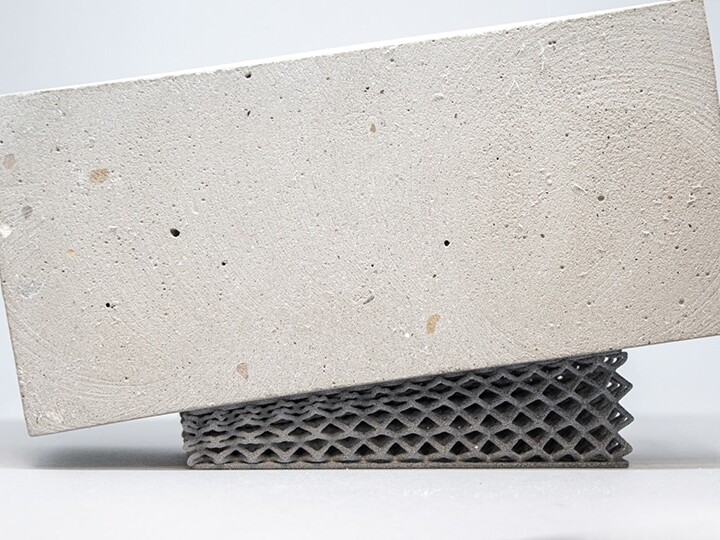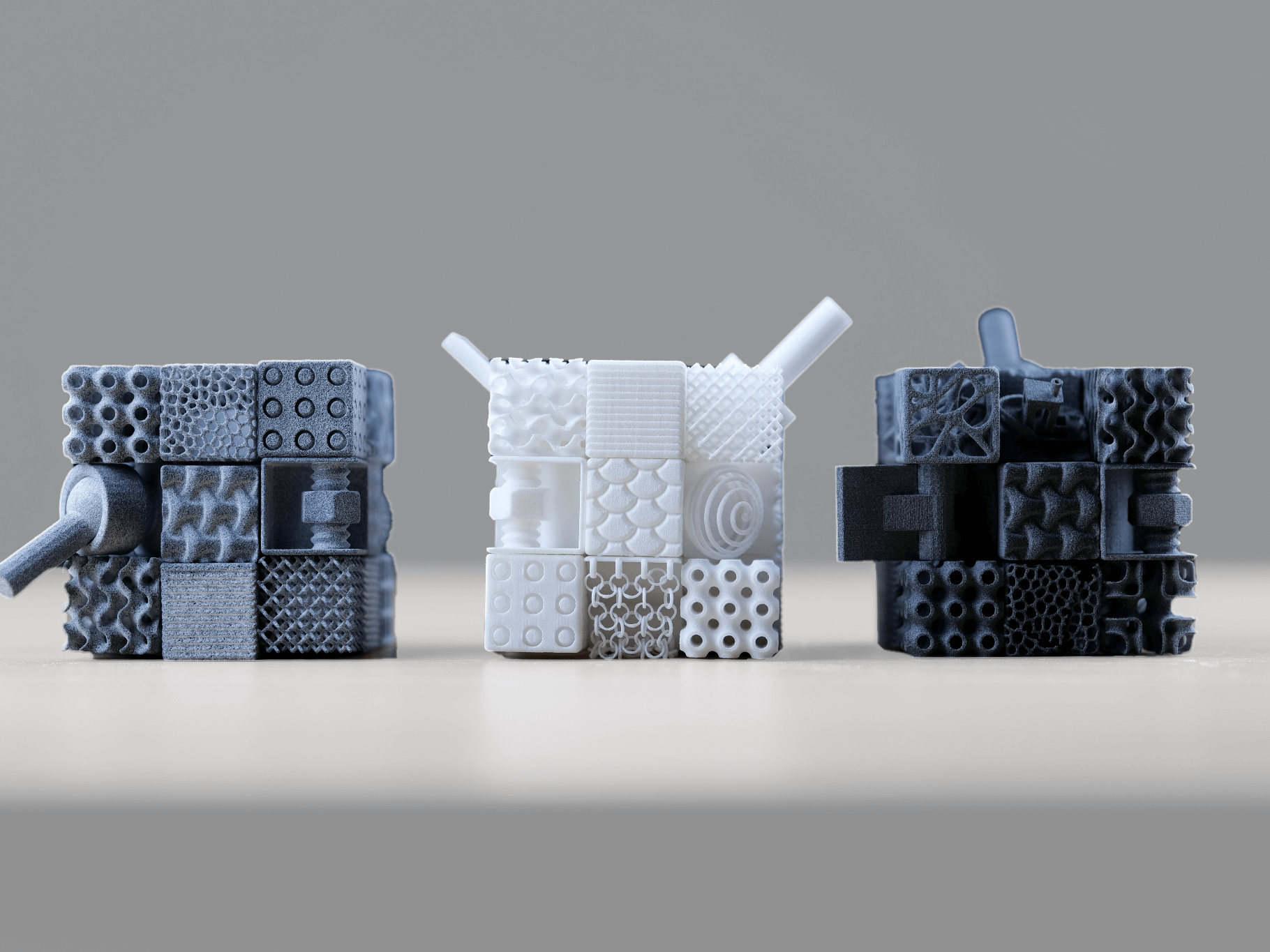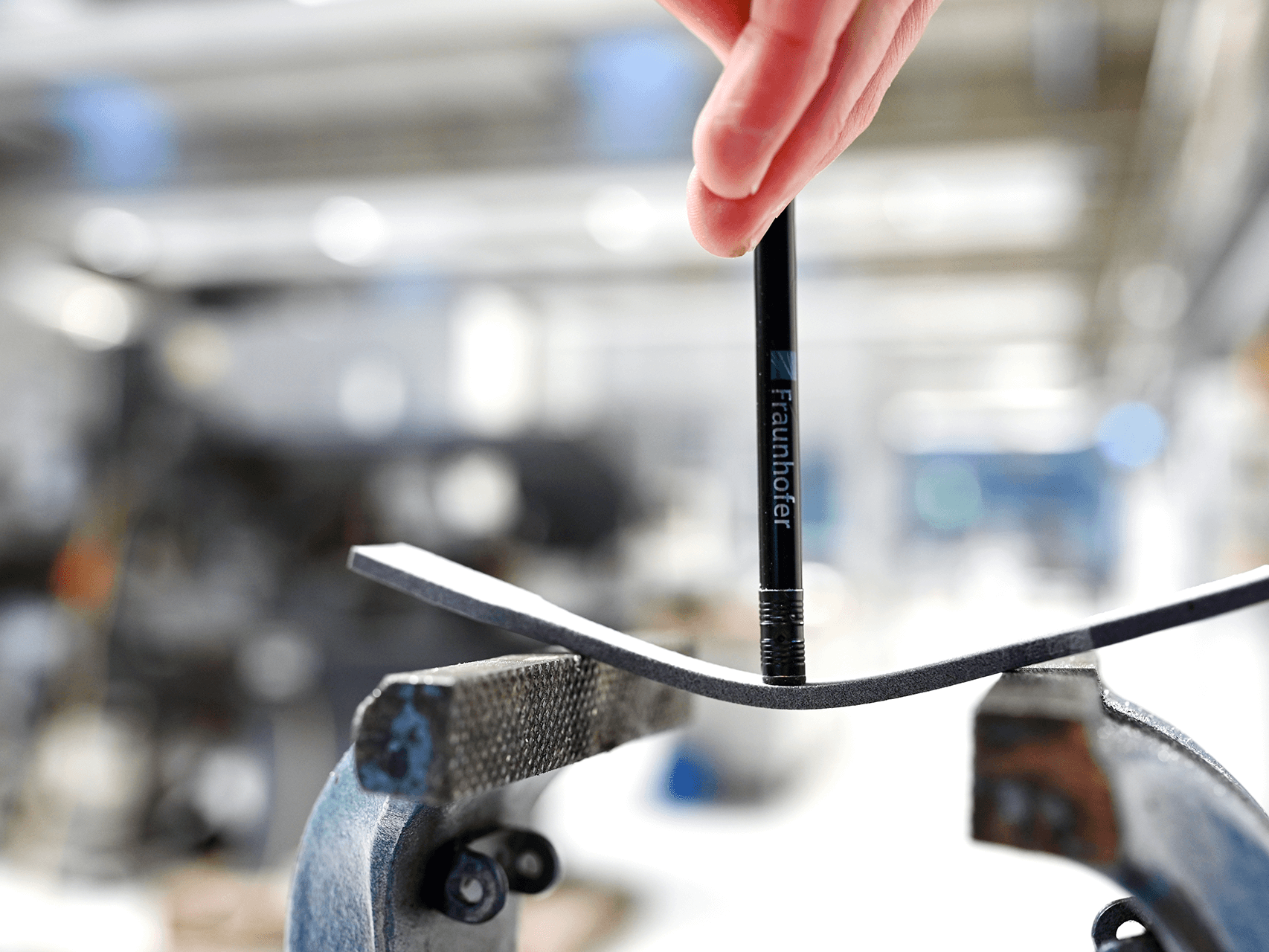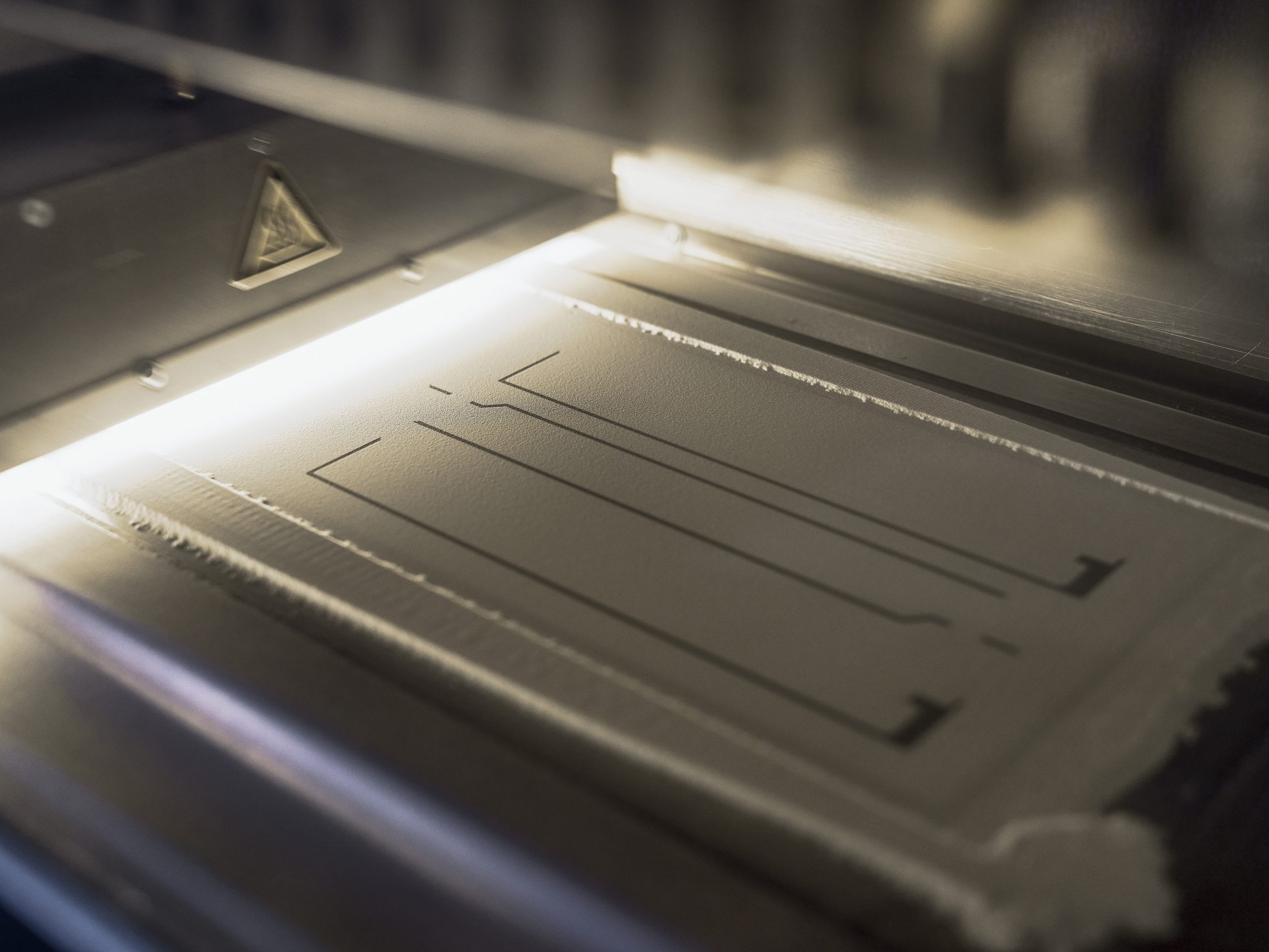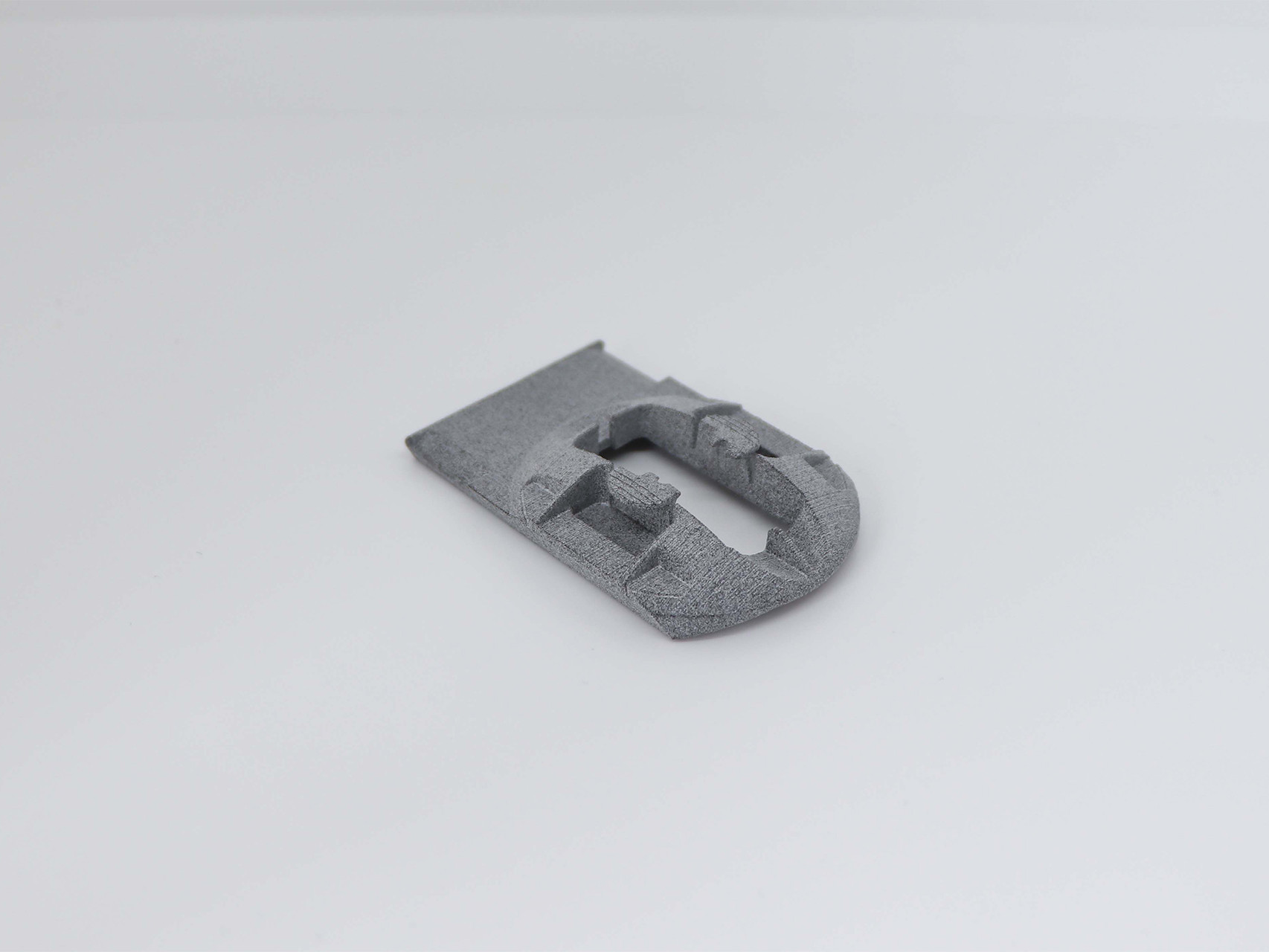- Home
- Case Studies
- Foundry
- 3D bicycle part in batch size
Custom bikesin batch sizes
Modern carbon fiber bicycles are sold in only a few different sizes because the tooling is expensive. However, every person is different and rides in a unique way. Therefore, customized bicycles are required for the optimal enjoyment and performance of cycling.
Custom bicycles can be very expensive due to the manual labour involved when fabricating without tooling. ideas2cycles has developed a process that allows the use of modern materials and joining methods in custom bicycles without the need for expensive tools. The solution is casting metal nodes for joining carbon fiber tubes. The tooling is printed using an industrial 3D printer VX1000 from voxeljet.
There are two reasons why projects such as this one can be implemented: In the first place Antin is a graduate engineer who has required know-how, and secondly he knows about the digital production methods which allow for the cost-effective implementation of putting creative ideas into practice. In this context, Antin bases the concept of the bike frame on a simple but ingenious design, and combines the various frame tubes with exactly calculated sleeves. An magnesium alloy is used for the precision casting parts to save on weight.
The process starts with simulation-based design. Load cases and boundary conditions are defined and topology optimization is performed. The optimal shape is then transferred to a CAD model that contains the tailored dimensions for each customer. The tooling is designed and the casting process is simulated. When the design is ready, the STL files of the tools are sent to a company (Hetitec Oy) for printing. Within a week the tools arrive at the foundry and the casting can be done. Difficulties in casting the metal matrix composite (Al-SiC) material led to a failed first attempt. Changes in the mold design were required, but fortunately the fast lead time of the molds meant that the problems were quickly solved. The successful nodes are post-machined and bonded to carbon fiber tubes. The bike is now ready for a test ride!
We have tried a variety of methods for building bike frames according to customer specifications in single batch sizes. The 3D printing technology turned out to be the simplest and most cost-efficient method. The customer will select his favourite frame from a set of basic types, which is then customised to his requirements in CAD and subsequently printed using the 3D printing method – and that´s that.
Kim-Niklas Antin
The clever guy from Finland e-mails the CAD data for the sleeves to the voxeljet On-Demand Service center. Here, a 3D printer quickly prepares the plastic models for subsequent precision casting in a fully automated process without the use of tools. The plastic molds are as precise and true-to-detail as prescribed by the requirements.
More Case Studies
3d printed joysticks for tractors and machines
For Lindner Traktorenwerke, 3D printing is already an alternative to injection molding. For example, for customized joysticks and control elements for their tractors.
URWAHN – 3D printing in bike manufacturing
To produce its e-bikes, URWAHN has focused on reshoring and lean management and is achieving these goals through additive manufacturing. Learn what role the voxeljet technology plays.
HSS Material Network – Proof of Concept TPU Launhardt
The HSS Material Network has published a new proof of concept. The TPU from the manufacturer Launhardt is one of the softest on the market.
Industrial Polymer 3D Printing Review: An extensive comparison of voxeljet HSS, HP MJF, and SLS
Whats the difference between HSS, MJF and SLS polymer 3D printing? Get to know the three main AM technologies for polymers in this extensive comparison.
HSS Material Network – Proof of Concept HDPE
Together with Fraunhofer IPA we have qualified the polymer HDPE for additive manufacturing within our HSS Material Network.
HP Multi Jet Fusion and voxeljet High Speed Sintering in comparison
The 3D printing processes MJF and HSS in comparison: Where are the differences and advantages for users?
Polymer sintering in custom mechanical engineering
With High Speed Polymer Sintering, prototypes can be realized much faster and economically viable.
3D Printing Solutions
Want to learn more about us and 3D printing? Click here for the entire voxeljet solution portfolio.



















